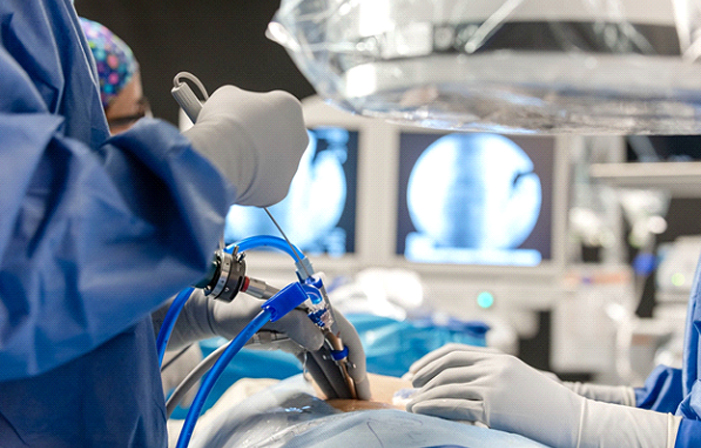The Role of Spine Surgery and Non-Surgical Treatments – An Integrated Approach
Introduction
The spine, also known as the vertebral column, is a complex structure that provides support, stability, and mobility to the human body. It is made up of 33 vertebrae, intervertebral discs, muscles, ligaments, and nerves, all working together to allow for movement and sensation. However, due to various factors such as age, genetics, injury, and poor posture, the spine can become damaged or degenerated, leading to pain, discomfort, and decreased functionality. In such cases, an integrated approach to spine health is crucial for effective treatment and management. This article will explore the role of spine surgery and non-surgical treatments in promoting spine health and improving quality of life.
The Role of Spine Surgery in Spine Health
Spine surgery is often considered a last resort for treating spine-related conditions, as it involves invasive procedures and carries certain risks. However, in some cases, surgery may be the best option for relieving severe pain, improving mobility, and preventing further damage. Some common spine surgeries include discectomy, laminectomy, spinal fusion, and artificial disc replacement.
Discectomy is a procedure in which a herniated or bulging disc is removed to alleviate pressure on the spinal nerves and reduce pain. Laminectomy, on the other hand, involves removing a portion of the vertebral bone (lamina) to create more space for the spinal cord and nerves, thus relieving compression and pain. Spinal fusion, as the name suggests, involves fusing two or more vertebrae together using bone grafts or implants to provide stability and prevent motion in the affected area. Lastly, artificial disc replacement is a newer technique that involves replacing a damaged disc with an artificial one, preserving motion and reducing the need for fusion.
It is essential to note that spine surgery should only be considered after all non-surgical treatments have been tried and failed. Moreover, the decision to undergo surgery should be made in consultation with a spine specialist, taking into account the patient’s overall health, age, and specific condition.
Non-Surgical Treatments for Spine Health
Non-surgical treatments for spine health include a wide range of options, from conservative measures such as rest, exercise, and physical therapy to more invasive interventions like injections and minimally invasive procedures. The goal of non-surgical treatments is to alleviate pain, improve mobility, and promote overall spine health without the need for surgery.
- Rest and Activity Modification: Rest is crucial for allowing the spine to heal and recover from injury or overuse. However, prolonged bed rest can lead to muscle weakness, stiffness, and decreased mobility. Therefore, it is essential to find a balance between rest and activity. In some cases, activity modification may be necessary to avoid aggravating the condition. This may involve avoiding certain movements, positions, or activities that exacerbate pain or discomfort.
- Exercise and Physical Therapy: Regular exercise and physical therapy play a vital role in maintaining spine health and preventing future problems. Strengthening the muscles that support the spine can help improve posture, stability, and mobility. Low-impact aerobic exercises, such as swimming, cycling, and walking, can help improve cardiovascular health, reduce pain, and promote overall well-being. A physical therapist can provide a customized exercise program tailored to the individual’s needs and condition.
- Pain Management: Various pain management techniques can be used to alleviate spine-related pain, including medication, injections, and minimally invasive procedures. Over-the-counter pain relievers, such as acetaminophen and non-steroidal anti-inflammatory drugs (NSAIDs), can help reduce pain and inflammation. Prescription medications, such as muscle relaxants, narcotics, and antidepressants, may be used in more severe cases. Injections, such as epidural steroid injections, facet joint injections, and nerve blocks, can provide targeted relief by delivering medication directly to the affected area. Minimally invasive procedures, such as radiofrequency ablation and spinal cord stimulation, can also be used to manage chronic pain.
- Alternative Therapies: Alternative therapies, such as acupuncture, chiropractic care, massage therapy, and yoga, have gained popularity in recent years for their potential benefits in treating spine-related conditions. Acupuncture involves the insertion of thin needles into specific points on the body to stimulate energy flow and promote healing. Chiropractic care focuses on the manual manipulation of the spine to improve alignment, mobility, and function. Massage therapy can help relieve muscle tension, improve circulation, and reduce stress. Yoga combines physical postures, breathing exercises, and meditation to promote flexibility, strength, and relaxation.
Conclusion
An integrated approach to spine health involves the combination of both surgical and non-surgical treatments to provide comprehensive care for patients with spine-related conditions. While surgery may be necessary in some cases, non-surgical treatments should always be considered first, as they offer a less invasive and often more effective solution for managing pain and improving mobility. By working closely with a spine specialist and following a customized treatment plan, patients can take an active role in promoting their spine health and enhancing their overall quality of life.
It is essential to remember that each patient’s situation is unique, and the most appropriate treatment will depend on various factors, including the specific condition, its severity, and the patient’s overall health and medical history. Therefore, it is crucial to consult with a qualified spine specialist to determine the best course of action for individual needs.
In summary, an integrated approach to spine health that includes both spine surgery Stewart and non-surgical treatments can help alleviate pain, improve mobility, and promote overall well-being for those suffering from spine-related conditions. By exploring all available options and working closely with a healthcare provider, patients can make informed decisions about their care and take steps towards achieving a healthier, more functional spine.










